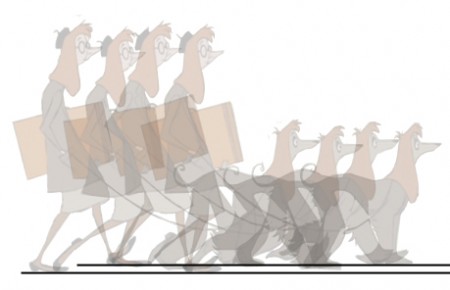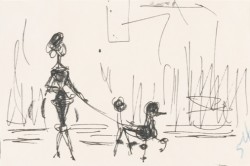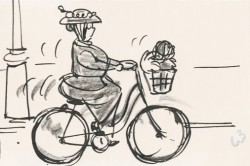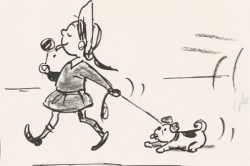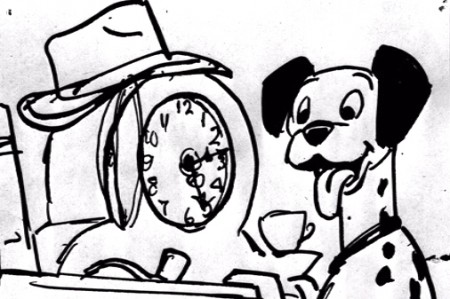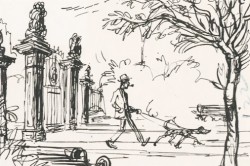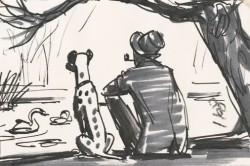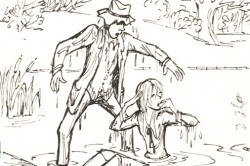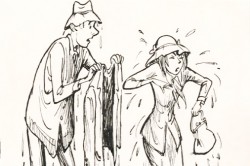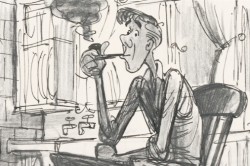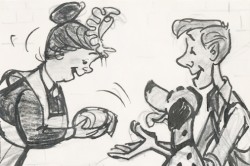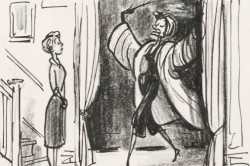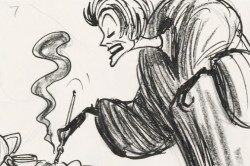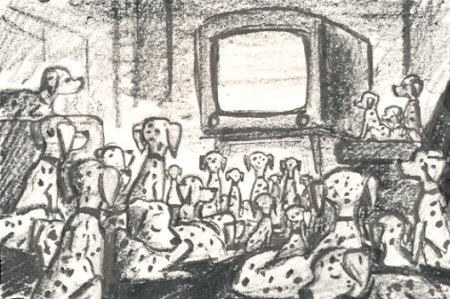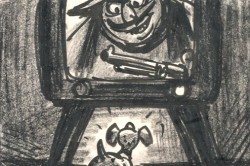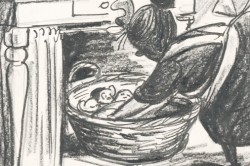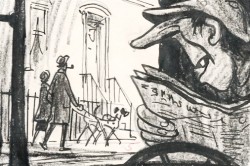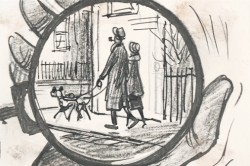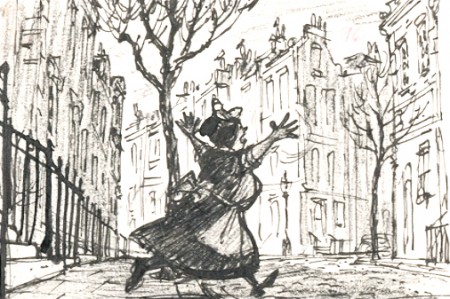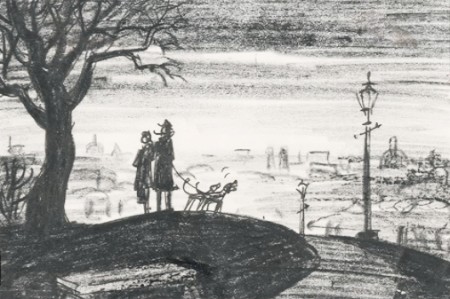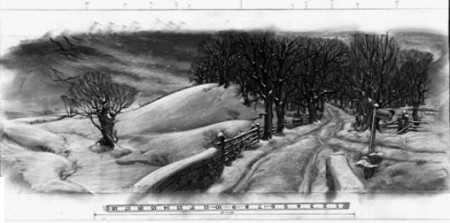Monthly ArchiveApril 2008
Daily post &Layout & Design &UPA 10 Apr 2008 08:26 am
Shirley Silvey’s King & Joe
On March 6th, I posted a piece on the UPA short, The King and Joe. This film was done for television as part of the Gerald McBoing Boing show. I wrote a very brief piece about it and conjectured that the art was inspired by Paul Klee. (I had – and still have – a specific painting in mind which almost exactly matches a pan from the film. However, I haven’t been able to find a copy of that painting.) Boy, was I wrong.
I received this note from Shirley Silvey, one of the designers of the film, and I’d like to post it. I hope that meets her approval.

A color still from Amid Amidi’s great book, Cartoon Modern.
He credits director: unknown. Now, we know the director’s name.
My name is Shirley Silvey and I worked on “The King and Joeâ€. In 1956, near the end of the Gerald McBoing Boing Show, UPA hired Ed Levitt, a well known director/storyboard/layout and design artist to do some shorts. Ed wanted me to work with him, so I was hired as well. While Ed was a veteran in animation, I was a novice. With the two of us and two animators together in the same room, we started on the first short entitled “The King and Joeâ€.
As far as the short itself, you questioned whether it was any good. We never thought or considered Klee for reference. As soon as we began, I purchased a book (published 1929) entitled “History of Ancient Persiaâ€. I used the book’s photos of the sculptures and bas-relief that was created during the reign of the Persian Achamedian kings andI used the 1929 landscapes of Iran as my only references.
The length of the short was determined by its song that had been recorded before we started. I do remember the long pan you commented on. Klee? No. I just drew highly designed arab tents and sand dunes. In regards to “Magoo’s 1001 Arabian Knightsâ€, I did layout, storyboard and character development under the art director Bob Dranko and animation director Abe Levitow.
I hope this explanation will exorcise the short from your brain. The King and Joe was just a little cartoon created by 2 artists who had fun doing it.
Regards,
Shirley Silvey
(I’d also written a snide comment in my original post saying that the film has haunted me for years and hoped writing extensively about it would “exorcize the film from my brain.” That’s her reference, and I deserved it.) The film was more than a “little cartoon” but still survives and compares well to most of the mediocre material done today.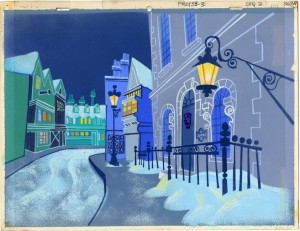
There’s an excellent interview with Shirley Silvey at the Toonarific Cartoons. The focus of the interview seems to be her work at Jay Ward’s studio, Bullwinkle and Hoppity Hooper, but there’s quite a bit more about work with Abe Levitow and UPA.
Several of her BG layouts appear on the new Abe Levitow site. One of these appears to the right.
See Magoo’s Christmas Carol and 1001 Arabian Nights.
__________________________________BG Layout – Shirley Silvey / Painting – Bob Inman.
Daily post &walk cycle 09 Apr 2008 01:06 pm
DVD problems UPDATE
- I’ve taken the dvd and made a high def high res QT and put it through AfterEffects. I was able to pull every frame. The 3:2 pull down gave every fifth frame as a dupe of frame 5. This allowed the piece to expand to 30fps.
Here then is what the cycle should look like:
WHAT A DIFFERENCE !
Animation &Disney &Frame Grabs 09 Apr 2008 08:25 am
DVD problems
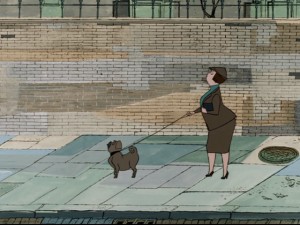 - Let’s talk a little about the problems of trying to study animation from a dvd. You can get a screen grab easily from the free media that comes with your computer. If you move ahead “1″ frame at a time and grab each image, you can study the animation. The only problem is it doesn’t really work.
- Let’s talk a little about the problems of trying to study animation from a dvd. You can get a screen grab easily from the free media that comes with your computer. If you move ahead “1″ frame at a time and grab each image, you can study the animation. The only problem is it doesn’t really work.
I’ve made a few posts where I’ve pulled every frame and separated the character (via photoshop) from the background, then put it through Aftereffects to create a walk cycle. You can see this with Betty Boop or Popeye or, now, from 101 Dalmatians a walk cycle of the Art Student.
The only problem is it’s a fake.
I’ve captured EVERY FRAME of those cycles, and I’ve meticulously assembled them up to Aftereffects. Hypothetically, the images should be posted on “ones” to make it work, but it doesn’t The timing is different – too fast. With each one of those three cycles, I’ve had to put the images I’ve captured on “threes” to get close to the timing of the original.
This would certainly have not made sense with a walk cycle from 101 Dalmatians. It most certainly is on “ones” in the actual film, yet the timing as captured is off. This can only mean that the compression on dvds is not allowing the images captured on a “frame by frame” basis to be all the images on the disk. I have to compensate. So far this compensation has worked.
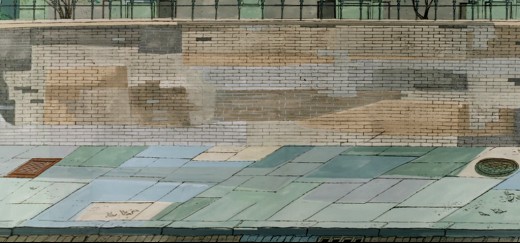
______________(Click any image to enlarge.)
But now I’ll show you one that doesn’t work. It has to be viewed on “ones”, and you have to see all the images to get it to work. This is the second walk cycle from 101 Dalmatians. The “Buxom girl and bulldog” walk comes close, but no cigar. There are only two positions for the little dog – expanded legs and crossing position. On “ones” this might look ok for a rapid walk, but to get the timing for this walk cycle – as it appears in the film – you actually have to put these frame grabs on something between “threes” and “fours”. It absolutely does not work.
So I give you a failed attept at showcasing another brilliant walk cycle from this excellent film. Here’s the “Buxom girl and bulldog” seq. 001, scene 21 from 101 Dalmatians. Blaine Gibson animated it.
Again, note that Hans Perk is posting the studio Drafts for this film on his site, and Mark Mayerson is posting Mosaics and comments on his site.
Animation Artifacts &Disney &Story & Storyboards 08 Apr 2008 08:22 am
101 Dalmatians – seq. 2 pt. 2
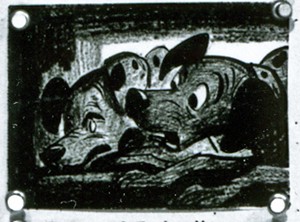 - Continuing with the yesterday’s post of the storyboard from 101 Dalmatians, we pick up with Cruella de Ville meeting Pongo in the film’s opening.
- Continuing with the yesterday’s post of the storyboard from 101 Dalmatians, we pick up with Cruella de Ville meeting Pongo in the film’s opening.
The storyboard sections were loaned to me by John Canemaker. Like past boards, they’re quite long, oversized photographs which would enlarge too small and illegible even if I worked at the max size. However, by my splitting each row in half, I can post them to be large enough for reading. This means I have to deconstruct the boards and put them together again. Below is the board for this sequence, and you can get an idea of its size.
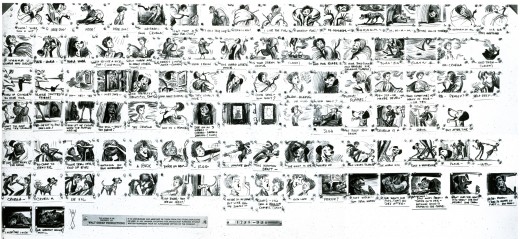
_________________(Click any image to enlarge.)
Here is the sequence reconstructed. It’s one of my favorites in this film, and I very much like the entire film. I do like seeing the song in storyboard form.
The real companions to this board are on two other sites:
___Hans Perk is posting the studio Drafts for this film on his site, and
___Mark Mayerson is posting Mosaics and comments on his site.
Animation Artifacts &Disney &Peet &Story & Storyboards 07 Apr 2008 08:05 am
101 Dalmatians – seq. 2 pt. 1
- The four artists pictured above were shot during a boisterous story meeting. Or more probably it’s a posed photo. It’s interesting that they pose a picture where the irrascible Bill Peet seems to be taking on the designer and directors of the film.
Left to right, that’s Woolie Reitherman, Bill Peet, Ken Andersen and Ham Luske.
This is the first of the storyboards loaned to me by John Canemaker. It’s the second sequence in 101 Dalmatians. The sequence starts with the wedding of Roger and Anita, Pongo and Perdita and takes us through the introduction of Cruella de Ville to pregnant Perdita worrying about the fate of her pups in the kitchen.
This board takes us more than half way through the sequence. The second board, which I’ll post tomorrow or Wednesday (it takes a while to scan and post these), takes us through the end of the sequence.
Hans Perk is posting the complete production drafts of this film, and Mark Mayerson has started creating a mosaic from the drafts Hans is posting. The information they’re both offering is invaluable.
As with past boards, I’ve split them up so that I can post the largest possible image. Otherwise they’d be the size of the full board, above.
Here we go:
 1a
1a
__________(Click any image to enlarge so that you can read it.)
SpornFilms &Story & Storyboards 06 Apr 2008 09:29 am
Abel Extra
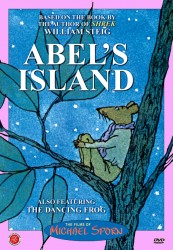 I’m currently preparing two dvd’s for release this coming June. They’re some of my favorite titles. One will feature The Marzipan Pig and Jazztime Tale. The second will feature Abel’s Island and The Story of the Dancing Frog.
I’m currently preparing two dvd’s for release this coming June. They’re some of my favorite titles. One will feature The Marzipan Pig and Jazztime Tale. The second will feature Abel’s Island and The Story of the Dancing Frog.
Among these extras will be animatics for both dvds as well as storyboards to view. I’m currently working on Abel’s Island, and since I’ve been scanning that storyboard, I thought it worthwhile to post a bit of it.
The story:
Abel, a mouse, has just been washed onto an island far from his new wife. A gentleman, he doesn’t know how to survive, and he just wants to escape across the river to get home. This is where we pick him up as he slowly, very slowly learns to come to grips with living alone on an island.
The board was done by Bridget Thorne and me. We seem to have done about every other drawing together. I don’t remember working on it at all. It was done in 1987.
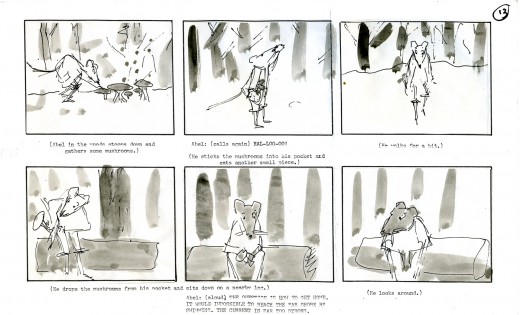
_________(Click any image to enlarge.
Daily post 05 Apr 2008 08:58 am
Newly Noted Sites
- The thing about the internet is that more and more and more sites keep coming. Many of them are routine, but some are special. The problem is that you have to pass through the ordinary to find the special, and usually a site/blog is special because the person who put it together is special.
There are three new-ish sites that I’d like to comment on. The first two are artist sites; the third is more commercial._________________________________________
- Veronika Soul is a brilliant artist who has had quite a career in animation. Her films have been screened at MoMA, Lincoln Center, the Film Forum, Pacific Film Archive, and the Centre Georges Pompidou, Paris. She has also been a graphic designer for print and broadcast media. 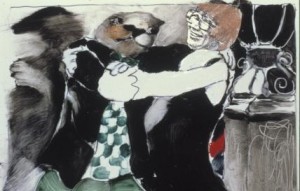
I first saw Veronika’s work at Ottawa’s Animation Festival in 1980. She had codirected a short, Interview, with Caroline Leaf. This was quite an unexpected and daring film, at the time, and it involved resetting our gears. (It’s well worth viewing if you can.) The film followed the festival circuit back then, and I got to see it another half dozen or so times. It kept opening larger and larger the more I’d seen it. ___________________ A still from Interview
I next met up with Veronika when she moved to New York. For a while she worked with R.O.Blechman‘s Ink Tank, and I was surprised to see how well she thrived in the commercial environment. I was impressed. Veronika eventually left the City for a few years, but now she’s returned and has trumpeted her arrival with this brand new site.
Go to Veronika Soul Design to visit. I ended up spending quite a bit of time perusing when I first toured it.
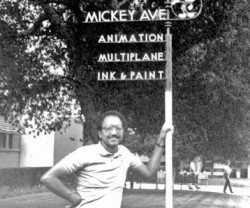 - For some time, I would rush to Jim Hill Media every Tuesday to see if there was a new article by Floyd Norman. Stories about Sword In The Stone, Sleeping Beauty or The Parent Trap mixed with more current films Mulan or Toy Story 2.
- For some time, I would rush to Jim Hill Media every Tuesday to see if there was a new article by Floyd Norman. Stories about Sword In The Stone, Sleeping Beauty or The Parent Trap mixed with more current films Mulan or Toy Story 2.
Now Floyd has taken to his own blog, Mr. Fun, and the joy is that new commentaries are posted daily. Hopefully, this will continue, because I can’t get enough, and I suspect the same will be true for you.
The reason to go to Floyd Norman‘s site is obvious. He was one of the fine artists who grew in the Disney system through the last half of the 20th Century. He contributed animation, assisting, story development and much art
(as well as sweat) to many feature films. He was a participant in the end of the last great
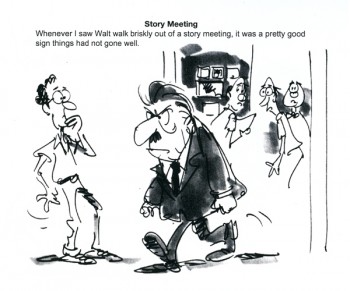 generation of artists who worked there – working with the so-called “nine old men.” He also bridged to the last big spurt of energy that produced many a fine 2D film under Eisner’s realm. Floyd has been deservedly named one of the Disney “Legends.”
generation of artists who worked there – working with the so-called “nine old men.” He also bridged to the last big spurt of energy that produced many a fine 2D film under Eisner’s realm. Floyd has been deservedly named one of the Disney “Legends.”
Stories out of the mouths of the people who lived it are the most precious, and Floyd has many great stories that give a real indication of how the studio worked during its heyday. He also knows how to write well so the stories are told clearly and succinctly. ___________This cartoon comes from Floyd’s book,
This is a good blog.___________________________“Son of Faster Cheaper.”
___________________________He has several great gag books that can be bought here.
 - I’m not sure if I’m the last one to the party, but I just located two AWN sites. AWN TV offers a number of QT animated movies. Lots of shorts are featured. I didn’t have the time to spend there, but when I do, I’ll watch a couple of the films.
- I’m not sure if I’m the last one to the party, but I just located two AWN sites. AWN TV offers a number of QT animated movies. Lots of shorts are featured. I didn’t have the time to spend there, but when I do, I’ll watch a couple of the films.
Of more interest to me is the Animation Blogspot. It took a while for me to initially load it, but I was surprised to see all the writing/posting on view. A free blogging service, it offers lots of blogs for viewing. Some I did read include:
____The Animation Pimp, Chris Robinson‘s blog
____My Animation Journal, Maureen Furniss‘ blog
____Larry’s Toon Institute, Larry Lauria‘s blog.
There are many more.
 I spent some time with Chris Robinson, the “Animation Pimp” as he harshly reviewed the Oscartoons and gave some thoughts on NFB today and “Madame Tutli Putli.” Chris has a very opinionated style, and I don’t always agree with him. However, I sure want to hear what he has to say. I pretty concur that the year’s best film was missing from the Oscar nominees. Koji Yamamura’s “Kafka’s a Country Doctor” is as brilliant as “Mt. Head.”
I spent some time with Chris Robinson, the “Animation Pimp” as he harshly reviewed the Oscartoons and gave some thoughts on NFB today and “Madame Tutli Putli.” Chris has a very opinionated style, and I don’t always agree with him. However, I sure want to hear what he has to say. I pretty concur that the year’s best film was missing from the Oscar nominees. Koji Yamamura’s “Kafka’s a Country Doctor” is as brilliant as “Mt. Head.”
There seems to be an enormous wealth of material on AWN, and you have to keep digging and digging to dredge up some of it. I have to admit, I haven’t gone too deep and maybe I should. Lotsa stuff; little time.___________________________________________
repeated posts &SpornFilms 04 Apr 2008 07:55 am
Recap Friday – Bridget Thorne
- The key to my studio in the first dozen or so years was the brilliant artist, Bridget Thorne. She was every bit my partner in creating some of the greatest of my films, and I can’t attribute more to her work. With this post, back in March 2006, I gave some small attention to some of the excellent art she’d done for my films. Time to show it off again.
Bridget Thorne has been an extraordinary Art Director and Background painter on quite a few of my favorite films produced within the studio. Here is some of that art.
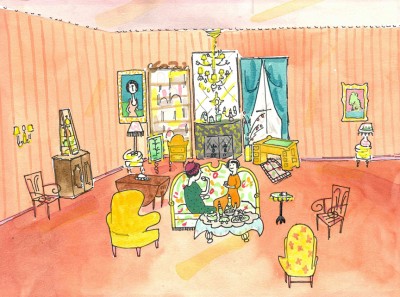 This painting is a key transition point in Lyle, Lyle Crocodile. The film had a looseness that Bernard Waber‘s original book art had featured. I felt very much at home in Waber’s style, and I think Bridget did as well.
This painting is a key transition point in Lyle, Lyle Crocodile. The film had a looseness that Bernard Waber‘s original book art had featured. I felt very much at home in Waber’s style, and I think Bridget did as well.
She worked out a color scheme for the film, and we both agreed to
______ (Click image to enlarge) Lyle, Lyle Crocodile (1987) _____.__follow it closely
___________________________________________________________throughout the half hour film for HBO. Liz Seidman lead the character coloring. Bridget, of course, had a strong hand in all those character models, as well.
The scene pictured above follows the introduction of Autumn on “East 88th Street”, and the background brings us full force into it as we get “the girl’s first song” – Mrs. Primm’s report on what it’s like to have a crocodile living in your house.
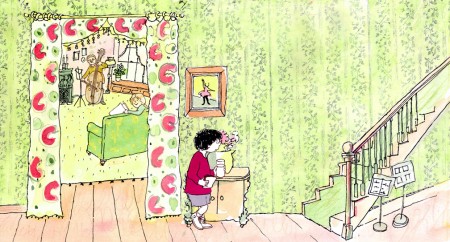 – Ira Sleeps Over was the second children’s book by Bernard Waber that we adapted. This is a very sweet story which involves a sibling rivalry; it focusses on a teddy bear and a sleep-over party. I pulled composer, William Finn, into the film and he wrote some great tunes for it. Prior to doing the script, I gave him the book and asked him to figure out where he would like the songs. In a week he had already written all the songs for the film, and they were brilliant. It turned out he used all the words of the book in his songs, and now I had to find a way of telling the same story using past, present and future tenses, as he did in the songs. It was a good challenge that worked out well and created a fabulous construction for the story.
– Ira Sleeps Over was the second children’s book by Bernard Waber that we adapted. This is a very sweet story which involves a sibling rivalry; it focusses on a teddy bear and a sleep-over party. I pulled composer, William Finn, into the film and he wrote some great tunes for it. Prior to doing the script, I gave him the book and asked him to figure out where he would like the songs. In a week he had already written all the songs for the film, and they were brilliant. It turned out he used all the words of the book in his songs, and now I had to find a way of telling the same story using past, present and future tenses, as he did in the songs. It was a good challenge that worked out well and created a fabulous construction for the story.
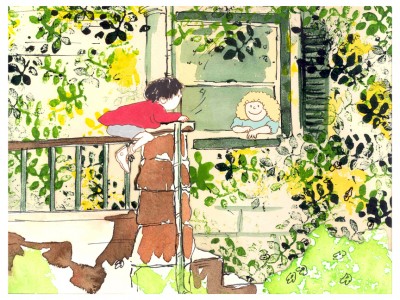 The style in this book was, if anything, looser than in Lyle. Waber did a lot of his illustration featuring duplicating printing techniques. Lino cut enabled him to repeat decorations throughout the settings. Bridget played with the lino cuts and was able to succesffully duplicate the technique in the backgrounds. In this one bg, at the beginning of the film, the foliage is a good example of this technique, printed over watercolors. The characters are markered paper drawings cut out and pasted to the cel overlays.
The style in this book was, if anything, looser than in Lyle. Waber did a lot of his illustration featuring duplicating printing techniques. Lino cut enabled him to repeat decorations throughout the settings. Bridget played with the lino cuts and was able to succesffully duplicate the technique in the backgrounds. In this one bg, at the beginning of the film, the foliage is a good example of this technique, printed over watercolors. The characters are markered paper drawings cut out and pasted to the cel overlays.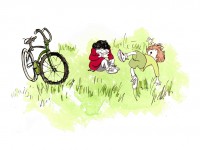
The book, like Lyle, featured a lot of white space, so we followed suit. When a book’s been in circulation for over 25 years, you have to realize there’s been a reason for it; find the reason and the heart, and take advantage of it. This use of white space made the actual backgrounds oftentimes little more than abstract shapes of color with a solid object on the screen. Here, for example, we see Ira and his friend, Reggie, playing against a blast of green and a bicycle.
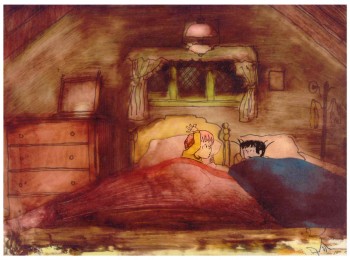 – At the end of the film, Ira and Reggie talk in the dark at the sleep-over. To get the look of the dark Bridget had to come up with something clever. The book resorted to B&W washes of gray and wasn’t very helpful. She came up with some dyes that were used for photo retouching. By quickly painting these lightly onto cel levels with a wide brush, she was able to get translucent cels with the brush strokes imbedded in the color overlays. By placing these overlays over the characters and backgrounds, we got the desired effect that let it feel connected to the very loose style of the film.
– At the end of the film, Ira and Reggie talk in the dark at the sleep-over. To get the look of the dark Bridget had to come up with something clever. The book resorted to B&W washes of gray and wasn’t very helpful. She came up with some dyes that were used for photo retouching. By quickly painting these lightly onto cel levels with a wide brush, she was able to get translucent cels with the brush strokes imbedded in the color overlays. By placing these overlays over the characters and backgrounds, we got the desired effect that let it feel connected to the very loose style of the film.
 -Abel’s Island is one of the few films we did that I treasure for its artwork. Bridget’s work on the backgrounds was, to me, extraordinary. The looseness I love was developed into enormously lush backgrounds using shades of green that I didn’t know could be captured in the delicate watercolors.
-Abel’s Island is one of the few films we did that I treasure for its artwork. Bridget’s work on the backgrounds was, to me, extraordinary. The looseness I love was developed into enormously lush backgrounds using shades of green that I didn’t know could be captured in the delicate watercolors.
This film was a complicated problem that seemed to resolve itself easily and flow onto the screen without much struggle. The book had won a Newberry Award as best children’s writing of its year. It was not a picture book but a novel. The more than 120 pages
(Click image to enlarge) Lyle, Lyle Crocodile (1987) featured fewer than 20 B&W spot drawings by author/illustrator, William Steig. We were on our own with the color.
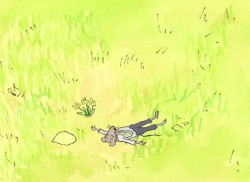 However, we had adapted Doctor DeSoto and The Amazing Bone as shorter films and could use what we’d learned from Steig on Abel. Bridget topped herself.
However, we had adapted Doctor DeSoto and The Amazing Bone as shorter films and could use what we’d learned from Steig on Abel. Bridget topped herself.
Several of the animators gave us more than I could have expected. Doug Compton‘s animation of Abel sculpting his statuary and living in his log was heart rending; Lisa Craft‘s animation of the big pocket watch, the big book and the leaf flying sequences was nothing short of inspired; and John Dilworth‘s animation of the owl fight was harrowing. This was all set up and completed by Tissa David‘s brilliant animation of Abel in the real world with wife, Amanda. She established our character.
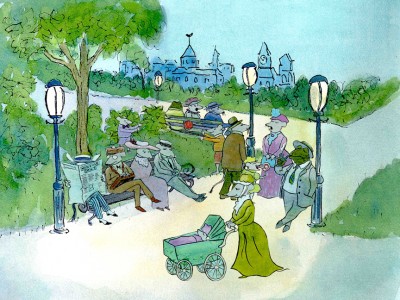 – At the end of the film, Abel, who has been separated from his new bride, trapped on an island for over a year, finally gets to come home. He sees Amanda in a park at twilight but decides to hold back. He races on ahead of her to greet her, privately, at home. The park sequence has a busyness as an acute counter to the lonliness we’ve watched for the previous 90% of the half-hour program. Setting it at early evening gave an opportunity for rich, royal colors. Bridget took full advantage of the opening, and underscored it all with a regal green not seen earlier. It was stunning and is one of my favorite backgrounds in the film.
– At the end of the film, Abel, who has been separated from his new bride, trapped on an island for over a year, finally gets to come home. He sees Amanda in a park at twilight but decides to hold back. He races on ahead of her to greet her, privately, at home. The park sequence has a busyness as an acute counter to the lonliness we’ve watched for the previous 90% of the half-hour program. Setting it at early evening gave an opportunity for rich, royal colors. Bridget took full advantage of the opening, and underscored it all with a regal green not seen earlier. It was stunning and is one of my favorite backgrounds in the film.
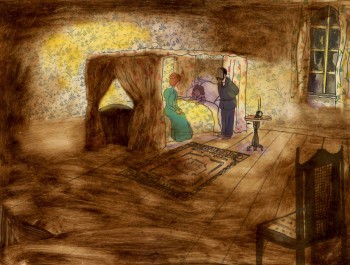 A Child’s Garden of Verses presented new and different problems to explore.
A Child’s Garden of Verses presented new and different problems to explore.
It was a project generated by HBO. Charles Strouse and Thomas Meehan were going to write the book and song score. We met several times trying to discover a way into the book of poems. I’d suggested we use the verses in Robert Louis Stevenson‘s book to illustrate the author’s early childhood.
Stevenson was a sickly boy who was always confined to his dark room. He was not
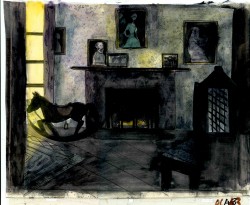 expected to live long. The only visitor for days on end was his overprotective mother.
expected to live long. The only visitor for days on end was his overprotective mother.
For much of the film, we had only the dark, child’s bedroom to explore. Artistically, I asked Bridget to delve deeper into the photgraphic dyes that she had discovered and used so well in Ira Sleeps Over. These dyes would allow us to keep the style, once again, loose while exploring dark areas and brush strokes to simulate the darkness “Robbie” lived in.
For the wallpaper throughout the house, Bridget used real wallpaper which was photostated; scaled down and reshaped to fit the backgrounds. Then watercolor washes colored these backgrounds and overlays were mixed and matched to get the desired results.
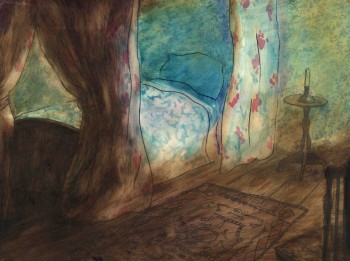 I was never quite pleased with this film. The elements that worked well worked really well. Bridget’s work was a highlight. The acting was extraordinarily good. Heidi Stallings performed with an enormous amount of emotion yet barely raised her voice above a whisper. Jonathan Pryce was brilliant as Robert Louis Stevenson, the narrator and even sang a song when asked at the last minute. Gregory Grant as the young “Robbie” was vulnerable, sweet and all we could have hoped for.
I was never quite pleased with this film. The elements that worked well worked really well. Bridget’s work was a highlight. The acting was extraordinarily good. Heidi Stallings performed with an enormous amount of emotion yet barely raised her voice above a whisper. Jonathan Pryce was brilliant as Robert Louis Stevenson, the narrator and even sang a song when asked at the last minute. Gregory Grant as the young “Robbie” was vulnerable, sweet and all we could have hoped for.
However, there was too much of a rush given the delicacy of the piece, and the exterior backrounds done by me for the end of the film are poor. The animation is also hit and miss. Oddly enough, my favorite sequence used little actual animation but intense camera work. Ray Kosarin was the animator in charge of it, and it’s an impressive sequence.
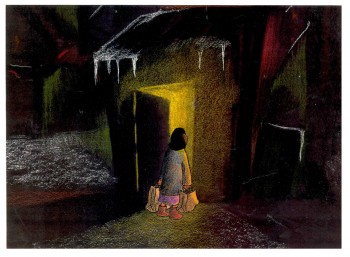
- The Talking Eggs was done for a PBS series called Long Ago & Far Away. It was an adaptation of a Creole Folk Tale which Maxine Fisher updated for me. (Lots of discussion between WGBH, Maxine & me about what distinguishes a Folk Tale from a Fairy Tale. It seriously impacted the story we were telling and I wanted what I wanted and got.)
Bridget chose to use pastels and we searched for a paper that would bring out the most grain. I loved the end result. The characters, to match the look of the Bgs, were xeroxed onto brown kraft paper and colored up from there with prismacolor pencils. This was cut out and pasted to cel.
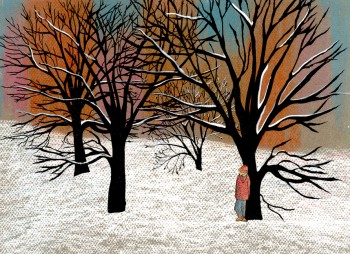 Danny Glover was the narrator, and we chose to make him an on-screen character appearing intermitently in the film. His narration was recorded on a rush as he stopped off in LA from SF on his way to direct a film in Africa.
Danny Glover was the narrator, and we chose to make him an on-screen character appearing intermitently in the film. His narration was recorded on a rush as he stopped off in LA from SF on his way to direct a film in Africa.
There’s a focus in these backgrounds that matches the content and mood of the piece, and it worked wonderfully for my purposes. I always like it when the medium is front and center; I want audiences to know that they’re watching animated drawings, and texture usually helps to do this. Of course, I also want the films to have a strong enough story that the audience gets past the point of knowing, to enter the film. It works some of the time, and I’m in heaven when it does.
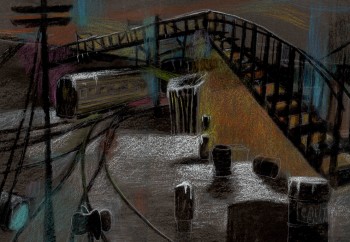 Bridget altered the color of the paper on which she was coloring with the chalks, and the different colored papers represented varied moods from sequence to sequence.
Bridget altered the color of the paper on which she was coloring with the chalks, and the different colored papers represented varied moods from sequence to sequence.
Naturally, there were some problems with the chalks under camera. All the fixative in the world didn’t stop the chalks from bleeding onto the cels or platen on the camera. (Lots more cleaning involved than usual.) We heard constantly from our cameraman, Gary Becker. The extra effort was worth it; the look was unique and successful.
Animation &Disney &Frame Grabs &walk cycle 03 Apr 2008 08:23 am
Art Student walking
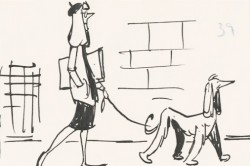 - When I was young, as I’ve pointed out many times, there were few books available about animation and as few illustrations and photos which ellicited the art of animation. Hence, it was always a treat when a Disney feature was released. The adjoining publicity would provide a trove of publicity material, some worth saving. An encyclopedia my parents bought at about the time of release of 101 Dalmations included several key images of Pongo running. One of those photos of many cels overlayed to detail the cycle. I loved that picture and frequently looked at that encyclopedia under “Cartoons, Animated” to study the photo of the cels.
- When I was young, as I’ve pointed out many times, there were few books available about animation and as few illustrations and photos which ellicited the art of animation. Hence, it was always a treat when a Disney feature was released. The adjoining publicity would provide a trove of publicity material, some worth saving. An encyclopedia my parents bought at about the time of release of 101 Dalmations included several key images of Pongo running. One of those photos of many cels overlayed to detail the cycle. I loved that picture and frequently looked at that encyclopedia under “Cartoons, Animated” to study the photo of the cels.
At the very beginning of 101 Dalmatians, Pongo looks out onto the street to search for a good mate for both himself and Roger, his owner. At this point we’re treated to a number of walk cycles that I think are brilliant. A number of women are perfectly matched to the dogs that they walk.
Now with DVDs available to us, we can see that the characters originated in the storyboard drawings, and we can study these walk cycles. I’m determined to take these animated bits apart to watch them a bit closer.
The first of these is the “girl art student” as described in the drafts (which can be found on Hans Perks’ excellent site A Film LA.) Oddly, from my very first viewing of this film back in 1961, I identified her as a “beatnick,” which was the fashionable joke back then. Now I find out she was an “art student.” I guess that makes sense.
Here’s the pan BG that this scene employs.
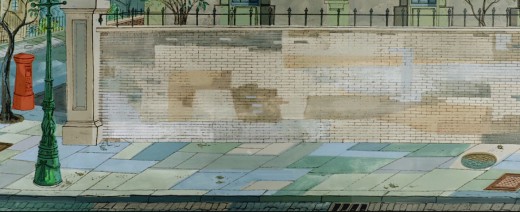
________________(Click any image to enlarge.)
And here is the walk cycle animated by Frank Thomas and Blaine Gibson.
Gibson handled the following scene which pans across the bodies of the pair as they walk.
Animation note: The two separate feet are divided by a short space. The left foot is on one plane, and the right foot is on another. This is a BASIC precept for animators to follow, and it’s something that is not appearing in a lot of the recent walk cycles I’ve been seeing. It’s annoying.
Animation Artifacts &Frame Grabs &Story & Storyboards 02 Apr 2008 09:12 am
101 Begins
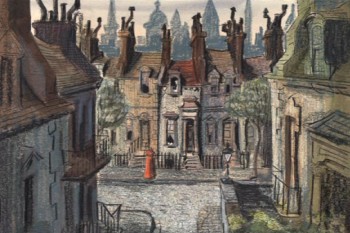 - Excellent news. Now that Hans Perk has been posting the animator drafts of 101 Dalmatians and, as a result of that, Mark Mayerson is putting together one of his fine Mosaics for the film, I’m able to contribute a small bit toward the study of this film. It all coincides nicely with the relatively new dvd package that Disney has released.
- Excellent news. Now that Hans Perk has been posting the animator drafts of 101 Dalmatians and, as a result of that, Mark Mayerson is putting together one of his fine Mosaics for the film, I’m able to contribute a small bit toward the study of this film. It all coincides nicely with the relatively new dvd package that Disney has released.
Starting Monday, thanks again to the generosity of John Canemaker, I’ll be posting a nice chunk of the storyboard for this film. It starts just after the wedding at the film’s opening and continues on. It’s Bill Peet’s original board, and I’m excited to put it up.
To celebrate, I’ve taken a few frame grabs off the dvd which showcases some of the opening storyboard drawings. Unfortunately, the images aren’t as large as I’d like on the dvd, but they’ll have to do. This is one of my favorite Disney features, and it really pleases me to see all this material come out. Thanks to Hans Perk for starting it all.
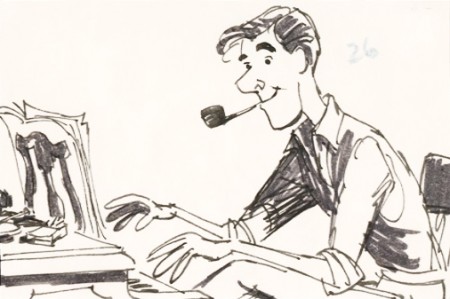
(Click any image to enlarge a bit.)________________
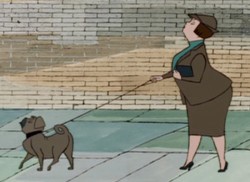 1
1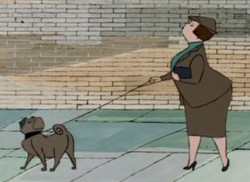 2
2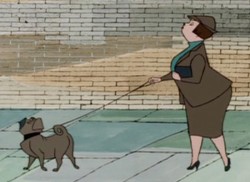
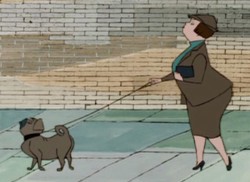 4
4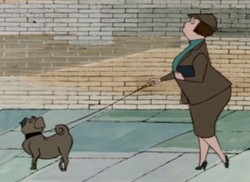 5
5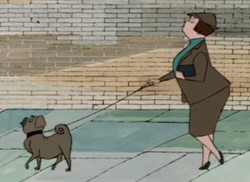 6
6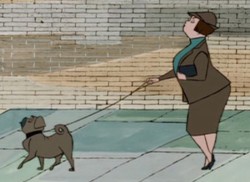 7
7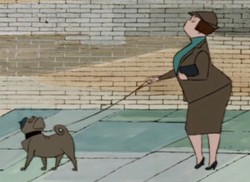 8
8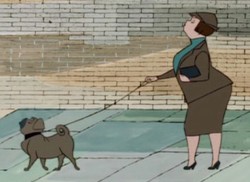 9
9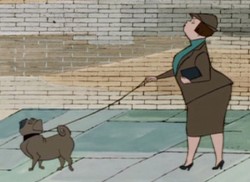 10
10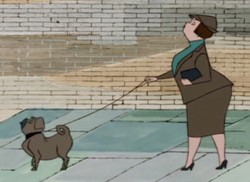 11
11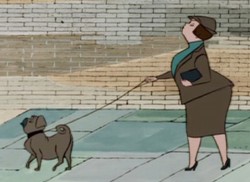 12
12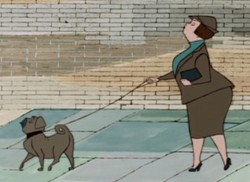 13
13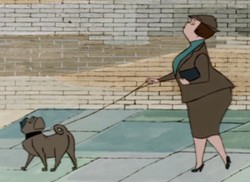 14
14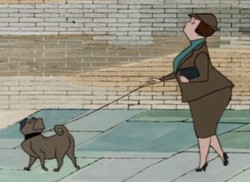 15
15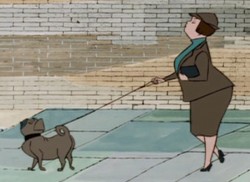 16
16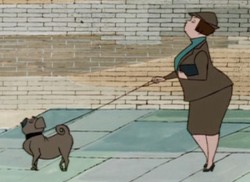 17
17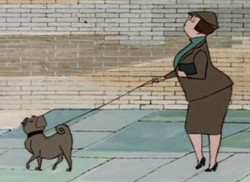 18
18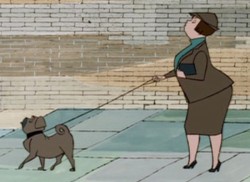 19
19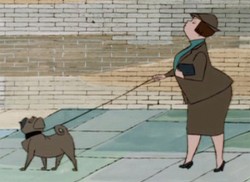 20
20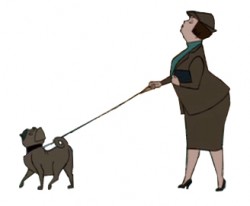 1
1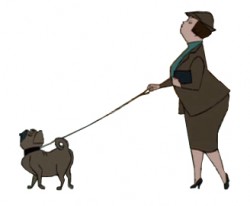 2
2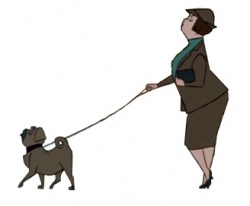 3
3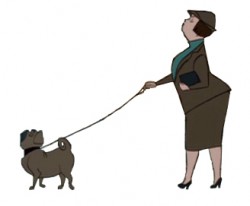 4
4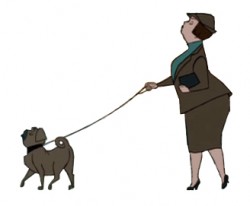 5
5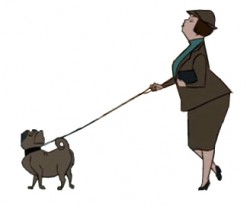 6
6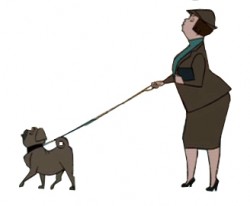 7
7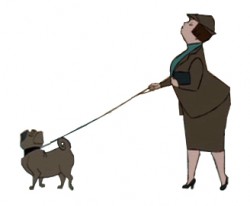 8
8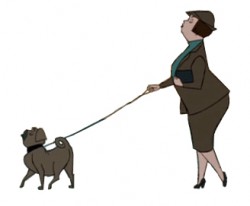 9
9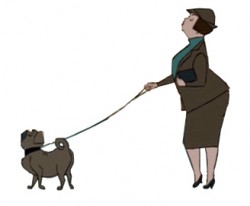 10
10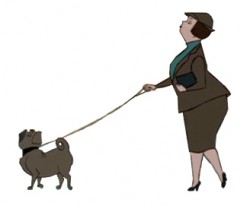 11
11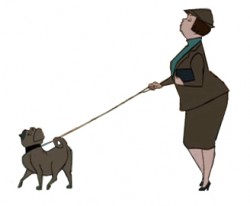 12
12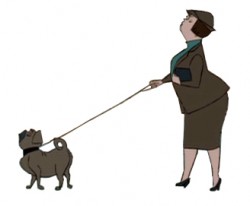 13
13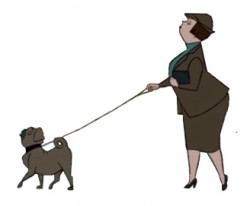 14
14 1a
1a 1b
1b 2a
2a 2b
2b 3a
3a 3b
3b 4a
4a 4b
4b 5a
5a 5b
5b 6a
6a 6b
6b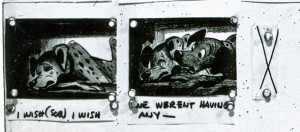 7
7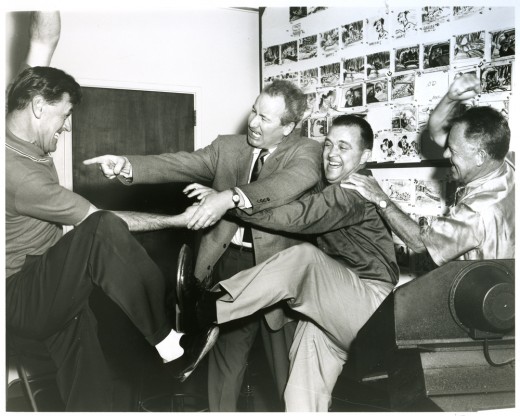
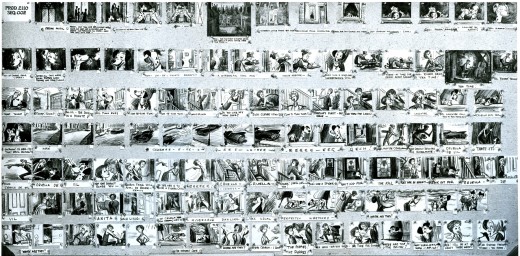
 1b
1b 2a
2a 2b
2b 3a
3a 3b
3b 4a
4a 4b
4b 5a
5a 5b
5b 6a
6a 6b
6b 7a
7a 7b
7b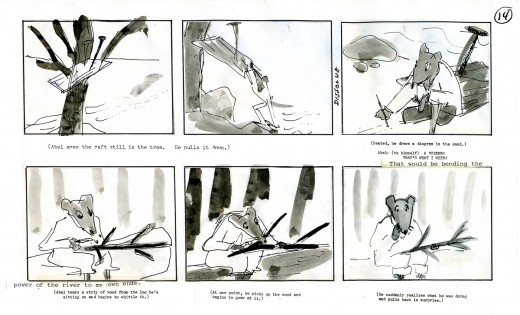
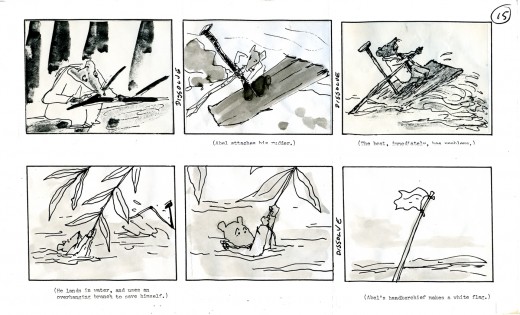
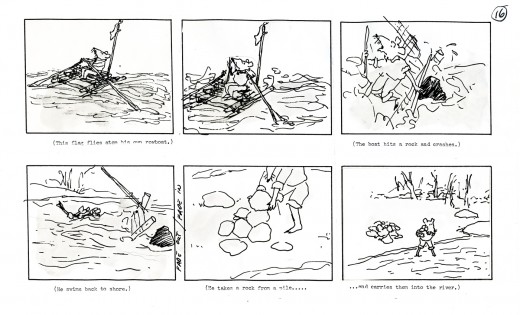
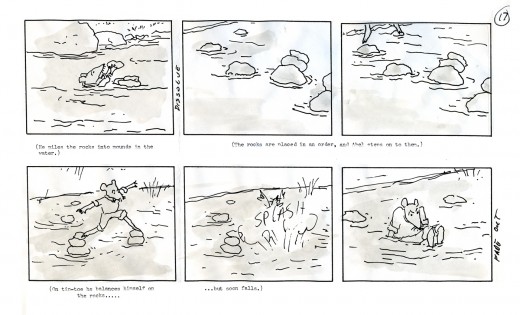
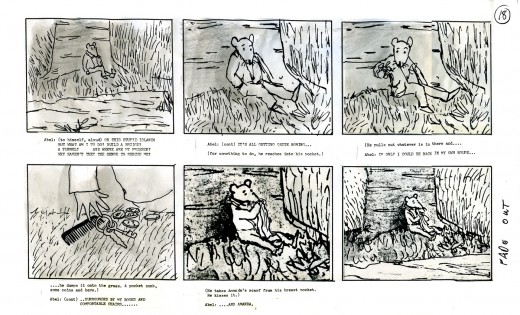
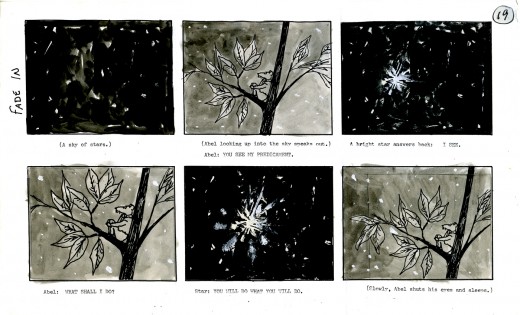
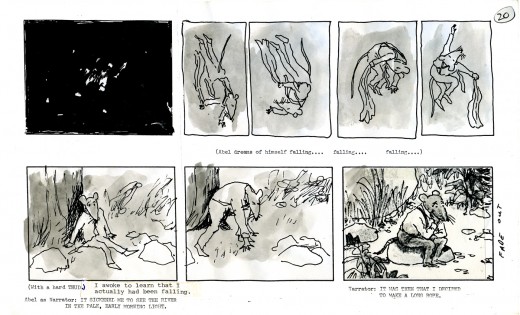

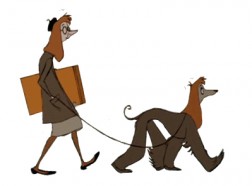 1
1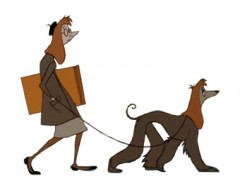 2
2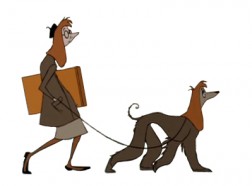 3
3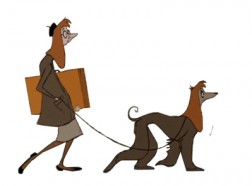 4
4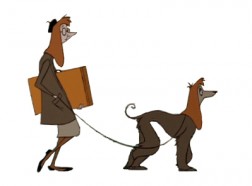 5
5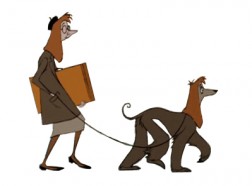 6
6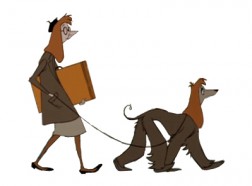 7
7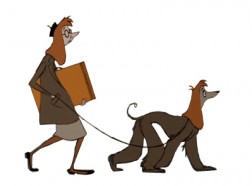 8
8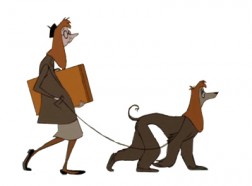 9
9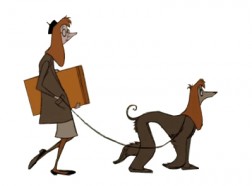 10
10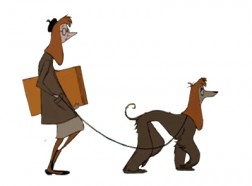 11
11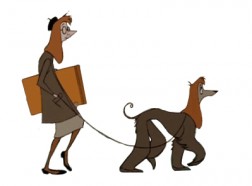 12
12